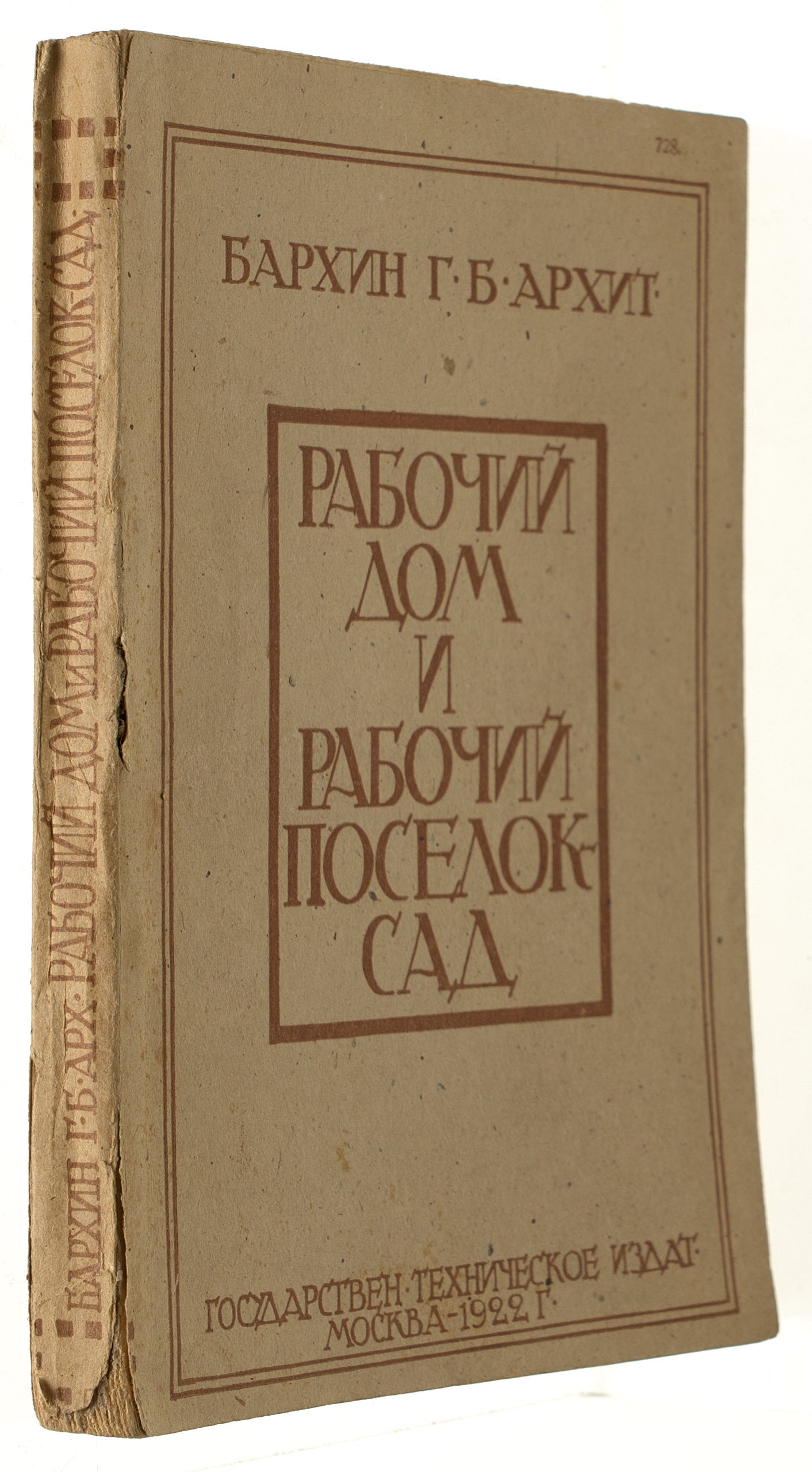Barkhin, G.
Worker's House and Worker's Garden-Village.
Worker's House and Worker's Garden-Village.
Couldn't load pickup availability
Barkhin, G. [Worker's House and Worker's Garden-Village]. Rabochiy Dom i Rabochiy Poselok-Sad.
Series Rabochaya biblioteka. A Seriya 2. № III-1.
Moskva, Gosudarstvennoe tekhnicheckoe izdatel'stvo, 1922.
12mo, 260, [3] pp., ill., plans, [1] folded leaf.
In original wrappers.
In good condition, small losses and cracks to spine.
One of 5 000 copies published.
The original essay by the prominent architect Grigori Barkhin (1880-1969) explores his architectural journey. Barkhin's early career involved classical building designs in Irkutsk and Moscow. However, he is best known for his avant-garde works in the 1920s, particularly his Izvestia Headquarters project (1926), which was a modern office building for the official newspaper of the Soviet government.
During the tumultuous periods of the Great War and the Civil War, building construction had virtually come to a halt. The newly established country faced the challenges of overpopulation and the dire need for improved housing for its workers. It was deemed unacceptable for the emerging ruling class to reside in such subpar conditions. As a result, in the propaganda of the early 1920s, the garden city movement was promoted as one of the symbols of the bright Communist future.
The book is divided into four main parts: technical and sanitary housing standards, building materials and supplies, workers' housing types, and urban gardens and suburban developments. Soviet architects were encouraged to draw inspiration from foreign innovations, such as construction using concrete and cement blocks, panel building, framing construction, and stucco finishes. Furthermore, the author introduced the concept of townhouses for Soviet workers, including single, double, and dormitory-style housing.
The monograph features projects by various architects, including E. Fahrenkamp, H. Mann, P. R. MacNeille, A. and J. Soutar, G. Metzendorf, W. Ballinger and E. G. Perrot (of the Ballinger Company), E. Kupffer (from Riga), E. Laube, among many others.
In the concluding section dedicated to city gardens, Barkhin describes notable international projects such as Letchworth Garden City, Hampstead Garden Suburb, Bournville and Port Sunlight, Brentham and New Earswick Garden Suburb, Hellerau, and Bridgeport (by Marcia Mead). The author also highlights several Russian initiatives, including Russia's first Garden City of Prozorovka (now Kratovo, 40 km from Moscow), designed for the employees of the Moscow-Kazan railway, Kaiserwald (Tsar's forest, now known as Mezaparks) in the north of Riga, and the Kizel settlement (Gubakha, Perm Krai).
'However, by the late 1920s, the attitude of the Soviet government to Howard's' ideas had changed: they were now stigmatized as utopian and petty bourgeois. The Garden City model gave way to a new Soviet strategy of overall town planning and improvement' (The European City and Green Space: London, Stockholm, Helsinki and St. Petersburg, 1850-2000. New York, 2006).
We couldn't trace any copy of this edition in the USA or European libraries via OCLC.
Please be advised that certain books in our collection may require an export permit for international shipping. If you are interested in purchasing such books for delivery abroad, kindly contact our staff for assistance in obtaining the necessary permit. We appreciate your understanding.










